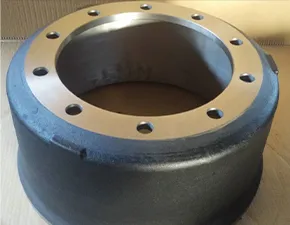
-
 Afrikaans
Afrikaans -
 Albanian
Albanian -
 Amharic
Amharic -
 Arabic
Arabic -
 Armenian
Armenian -
 Azerbaijani
Azerbaijani -
 Basque
Basque -
 Belarusian
Belarusian -
 Bengali
Bengali -
 Bosnian
Bosnian -
 Bulgarian
Bulgarian -
 Catalan
Catalan -
 Cebuano
Cebuano -
 Corsican
Corsican -
 Croatian
Croatian -
 Czech
Czech -
 Danish
Danish -
 Dutch
Dutch -
 English
English -
 Esperanto
Esperanto -
 Estonian
Estonian -
 Finnish
Finnish -
 French
French -
 Frisian
Frisian -
 Galician
Galician -
 Georgian
Georgian -
 German
German -
 Greek
Greek -
 Gujarati
Gujarati -
 Haitian Creole
Haitian Creole -
 hausa
hausa -
 hawaiian
hawaiian -
 Hebrew
Hebrew -
 Hindi
Hindi -
 Miao
Miao -
 Hungarian
Hungarian -
 Icelandic
Icelandic -
 igbo
igbo -
 Indonesian
Indonesian -
 irish
irish -
 Italian
Italian -
 Japanese
Japanese -
 Javanese
Javanese -
 Kannada
Kannada -
 kazakh
kazakh -
 Khmer
Khmer -
 Rwandese
Rwandese -
 Korean
Korean -
 Kurdish
Kurdish -
 Kyrgyz
Kyrgyz -
 Lao
Lao -
 Latin
Latin -
 Latvian
Latvian -
 Lithuanian
Lithuanian -
 Luxembourgish
Luxembourgish -
 Macedonian
Macedonian -
 Malgashi
Malgashi -
 Malay
Malay -
 Malayalam
Malayalam -
 Maltese
Maltese -
 Maori
Maori -
 Marathi
Marathi -
 Mongolian
Mongolian -
 Myanmar
Myanmar -
 Nepali
Nepali -
 Norwegian
Norwegian -
 Norwegian
Norwegian -
 Occitan
Occitan -
 Pashto
Pashto -
 Persian
Persian -
 Polish
Polish -
 Portuguese
Portuguese -
 Punjabi
Punjabi -
 Romanian
Romanian -
 Russian
Russian -
 Samoan
Samoan -
 Scottish Gaelic
Scottish Gaelic -
 Serbian
Serbian -
 Sesotho
Sesotho -
 Shona
Shona -
 Sindhi
Sindhi -
 Sinhala
Sinhala -
 Slovak
Slovak -
 Slovenian
Slovenian -
 Somali
Somali -
 Spanish
Spanish -
 Sundanese
Sundanese -
 Swahili
Swahili -
 Swedish
Swedish -
 Tagalog
Tagalog -
 Tajik
Tajik -
 Tamil
Tamil -
 Tatar
Tatar -
 Telugu
Telugu -
 Thai
Thai -
 Turkish
Turkish -
 Turkmen
Turkmen -
 Ukrainian
Ukrainian -
 Urdu
Urdu -
 Uighur
Uighur -
 Uzbek
Uzbek -
 Vietnamese
Vietnamese -
 Welsh
Welsh -
 Bantu
Bantu -
 Yiddish
Yiddish -
 Yoruba
Yoruba -
 Zulu
Zulu
Factors Affecting the Lifespan of Drum Brakes in Vehicles
Understanding the Lifespan of Drum Brakes
Drum brakes are a common component in many vehicles, especially in older models and some budget cars. They operate by using friction caused by brake shoes pressing against a spinning drum to slow down or stop the vehicle. While drum brakes are generally reliable and effective, their lifespan can be influenced by several factors that every driver should understand.
Understanding the Lifespan of Drum Brakes
Another important factor is maintenance. Regular inspection and timely replacement of worn parts can significantly extend the lifespan of drum brakes. Brake shoes, for instance, should be checked periodically for signs of wear. When the friction material becomes too thin, it not only diminishes braking performance but can also cause damage to the drum itself, leading to more costly repairs. It is advisable to have a professional technician inspect the brake system every 20,000 to 30,000 miles.
drum brakes lifespan

Environmental conditions also play a role in brake lifespan. Vehicles exposed to high humidity, rain, or snow can experience faster wear due to corrosion and rust formation on the drum surface. Similarly, driving in areas with a lot of dust or sand can increase the abrasive materials acting on the brake components, leading to quicker deterioration.
Additionally, the quality of the materials used in both the drum and the brake shoes can affect longevity. Higher-quality components may initially cost more but can provide better performance and durability in the long run. Drivers should consider using OEM (Original Equipment Manufacturer) parts or high-grade aftermarket options for their brake systems.
The drum brake design also impacts its lifespan. Many modern vehicles are now equipped with disc brakes for better heat dissipation and performance, however, drum brakes are still widely used, particularly in rear braking systems. Understanding this system's unique characteristics can help drivers recognize its limitations and ensure proper use and maintenance.
In conclusion, the lifespan of drum brakes is not a fixed quantity; it is influenced by driving habits, maintenance practices, environmental factors, and the quality of parts used. By being proactive and attentive to these factors, drivers can ensure that their drum brakes not only perform optimally but also last as long as possible, thereby enhancing vehicle safety and performance. Regular maintenance and mindful driving practices are key to extending the life of this vital braking system.
-
What Are Drum BrakesNewsJul.07,2025
-
Understanding Brake Drum MaterialNewsJul.07,2025
-
Semi-Trailer Brake Drum: A Key Component for Extreme Loads and Long-Distance TransportNewsJul.07,2025
-
Drum Brake Pads for SaleNewsJul.07,2025
-
Brake Drums for SaleNewsJul.07,2025
-
Brake Drum ManufacturerNewsJul.07,2025
-
Aluminum Brake Drums: The Future of High-Performance CarsNewsJul.07,2025
